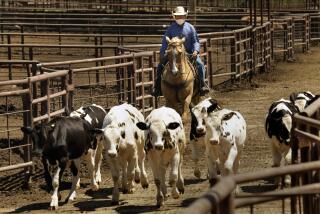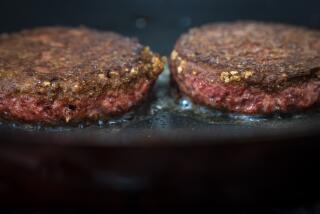Light-Beef Industry, Once Hefty, Now Runs Lean : Agriculture: Four years ago, there were more than 50 companies in the business; now there are fewer than 10.
- Share via
LUBBOCK, Tex. — Four years ago, more than 50 companies set out to sell Americans on the healthful hamburger.
But the light-beef industry that entered the 1990s is, well, leaner: Fewer than 10 companies still offer light beef--by definition meat that contains 25% less fat than the industry average.
High start-up costs, poor management and a failure to meet U.S. Department of Agriculture specifications helped kill off a majority of those hoping to turn low-fat beef into a cash cow, said Gary Smith, an animal science professor at Colorado State University.
Those who remain say they have survived with commitment, research, money and a product that is improving the image of the entire beef industry.
“The light-beef concept has awakened the industry and helped lead the way for a leaner product,” said Gordon Davis, a former Texas Tech University animal science professor who helped lead the pioneering research on light beef.
“Everybody wants beef that is more lean, and the light-beef producers are forcing the rest of the market to keep an eye on trimming the fat,” Davis said.
A 1988 survey conducted by Texas A&M; University found that as a whole the average fat content of America’s beef has dropped 26% in recent years. The average fat trim per cut hit an all-time low of 0.12 inches in 1990.
These drops have forced light-beef marketers to trim even more fat; the USDA insists that meat containing more than 75% of the industry fat average cannot be advertised as light beef.
More to Read
Inside the business of entertainment
The Wide Shot brings you news, analysis and insights on everything from streaming wars to production — and what it all means for the future.
You may occasionally receive promotional content from the Los Angeles Times.










